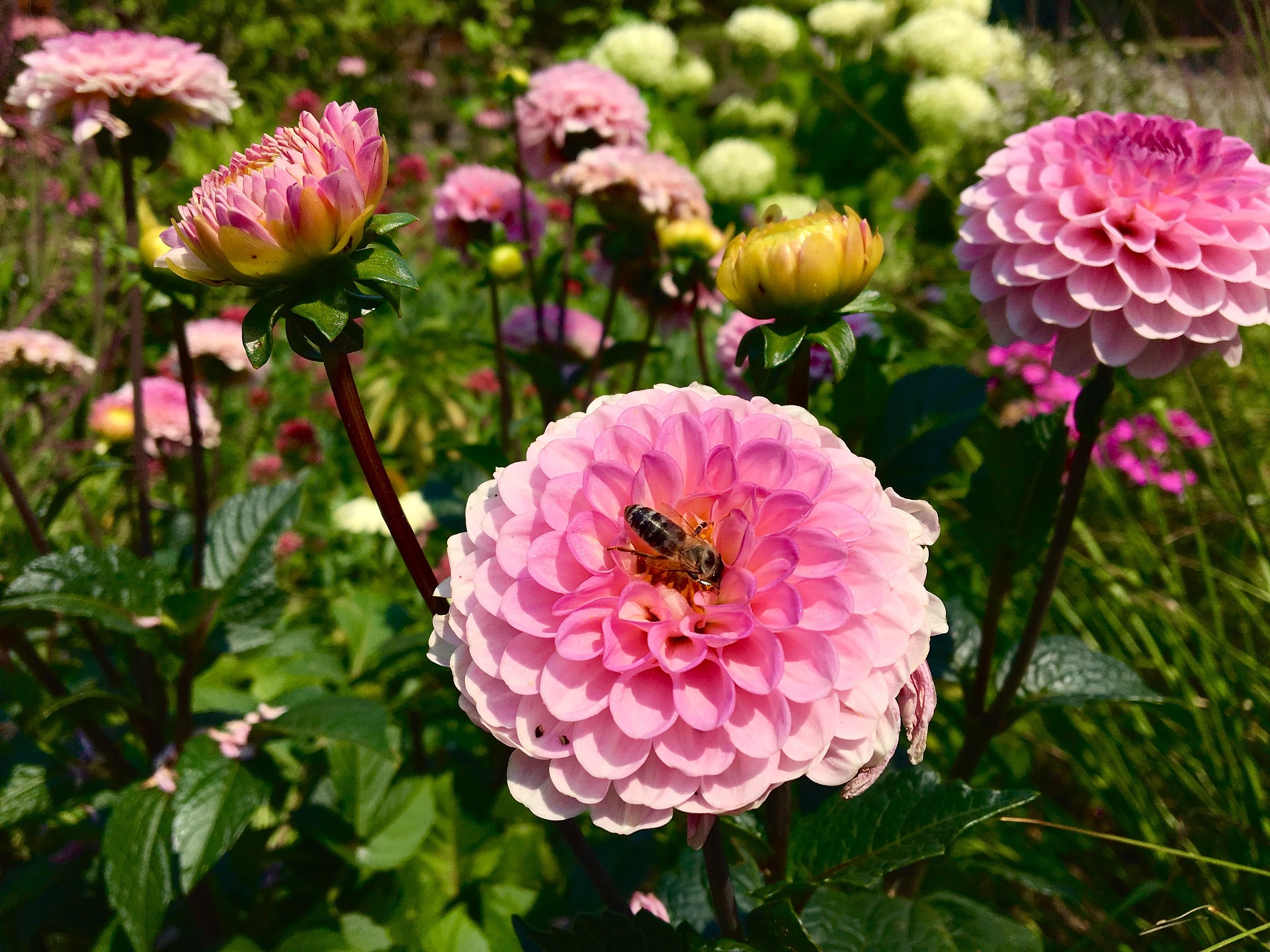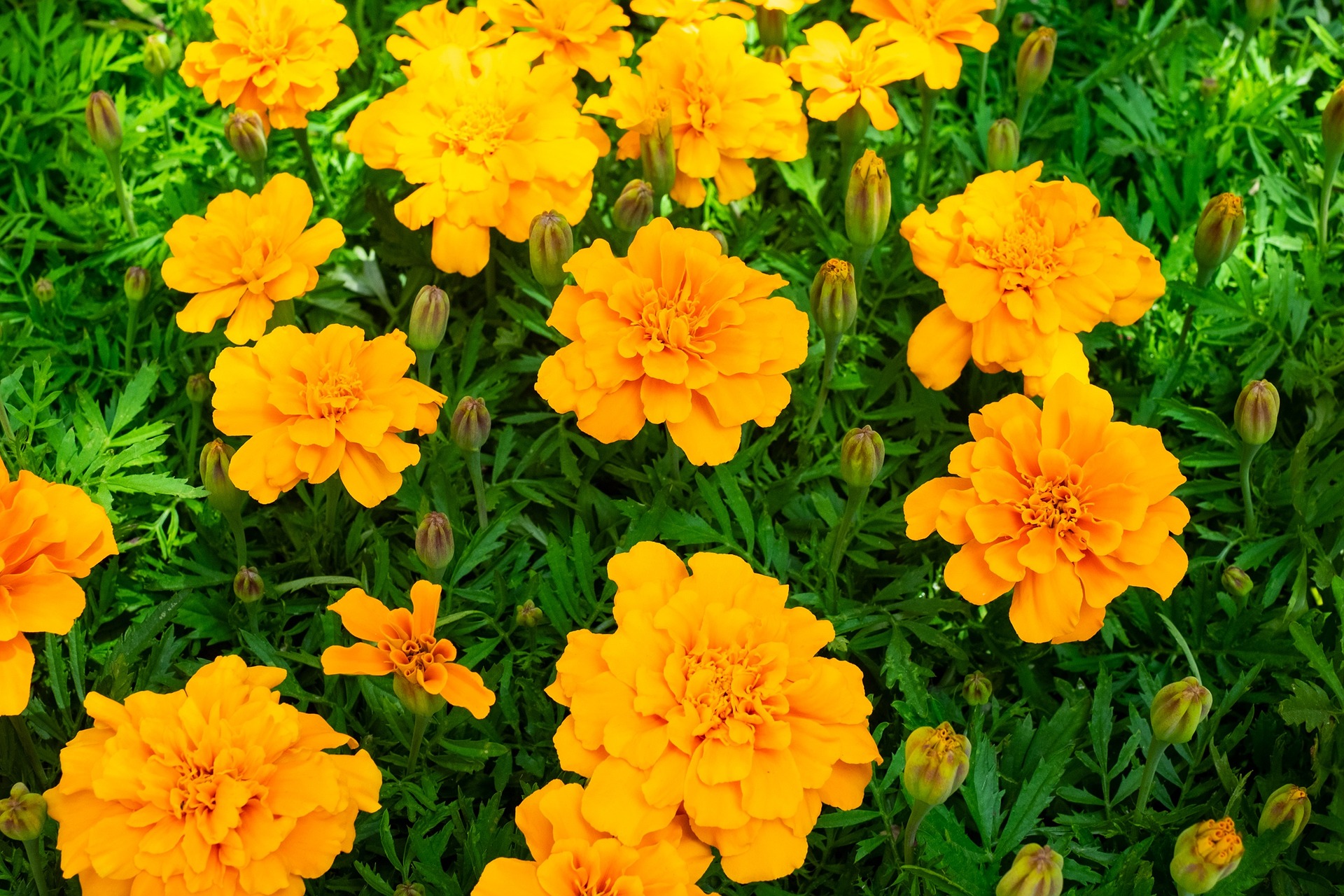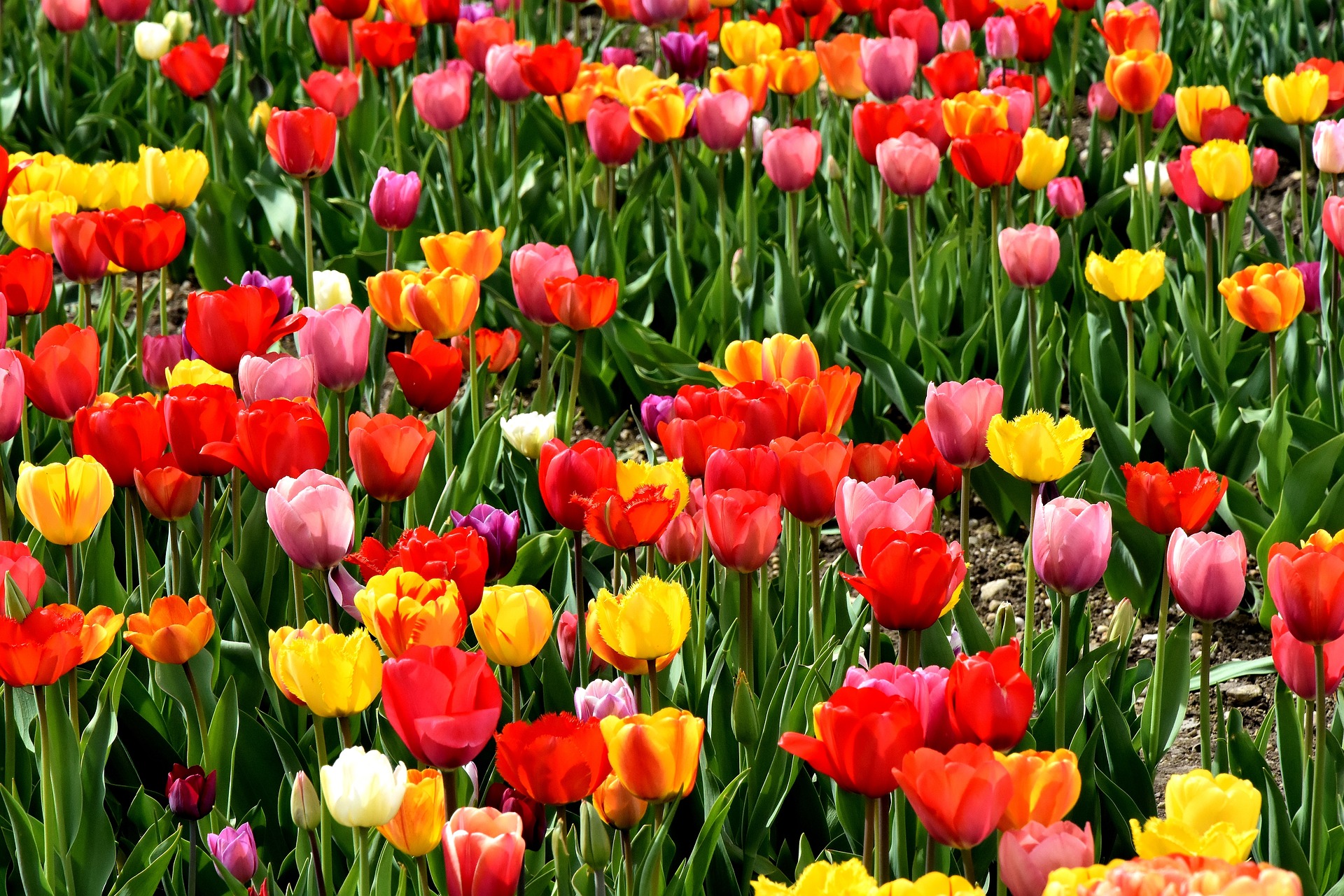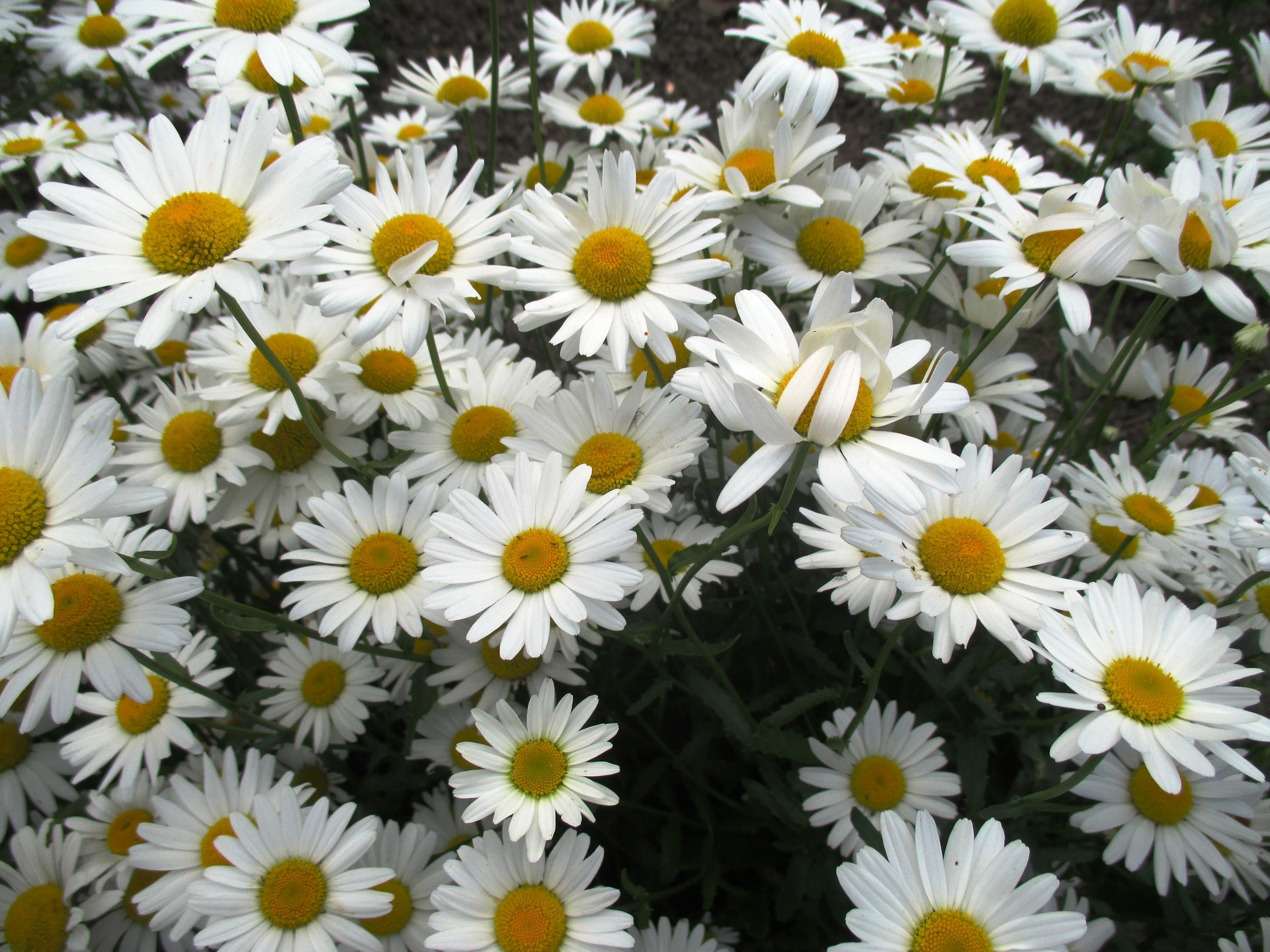The appearance of dahlia flowers is like that of stars with surrounding rays. Their large size and stunning beauty brightens up summer gardens and make them a must-have in the vase. They are also prized for their ability to bloom into the late summer, when many other flowers have died.
Some people have talked of loving to watch the showy dahlias dancing gracefully in the wind, on their long and branched stems.
About dahlias
Dahlias are perennial plants belonging to the family Asteraceae. They produce large flowers that grow from tuberous roots. Dahlias are unable to withstand freezing temperatures, therefore in very cold regions, they are grown as annuals. Very hot temperatures are also not recommended for dahlias, as they may fail to flower.
Dahlia flowers are composites, comprising ray florets that sorround central disc florets. They come in various shades including white, yellow, red, pink, orange and lavender.
| Scientific name | Dahlia spp |
| Common name | Dahlia |
| Family | Asteraceae |
| Plant type | Perennial |
| Mature plant size | 1 to 6 ft high, 1 to 2 ft wide |
| Soil pH | Acidic, neutral |
| Light/Sun exposure | Full sun |
| Hardiness zones | 8-10 (USDA) |
| Bloom time | Summer, fall |
| Leaf color | Green |
| Flower color | white, pink, red, yellow, orange, lavender |
| Native area | Central America, North America |
Site selection
Select an area that has access to full sunlight, and without interfering shade from trees. Avoid water-logged areas, as these affect dahlia growth negatively. The soil should be rich with good drainage.
Soil preparation and planting
Precaution should be taken not to plant dahlias before the risk of frost is over. For best results, dahlias should be planted from mid April through May for most areas.
Till the soil and add a 2–4-inch layer of organic manure like animal dung, dry mulch or peat moss and mix well with the soil. You can alternatively use potassium and phosphorous fertilizer.
Note: Avoid using nitrogen fertilizers as they may result into weak stems, small blooms and tubers that rot easily during winter storage.
Dig holes that are 4 to 6 inches deep and about 20 to 24 inches apart. Place each tuber in a hole and cover with soil. Water lightly and wait for sprouts to come out.
If you are planting in containers, use containers that are at least 20 inches in diameter.
Care for growing plants
Watering: When new sprouts have come up, watering is required if the weather is dry and hot. Water 2-3 times a week but ensure that the soil is not water-logged. Keep watering through the growing period whenever the weather is dry.
Mulching: Mulching is essential in retaining moisture in the soil and preventing growth of weeds. Apply 2–4-inch layer of mulch in form of dry leaves, plastic plane or straw. Organic mulch decomposes with time and adds additional nutrients to the soil.
Stopping: Involves the removal of the tip of the plant to encourage branching. This should be done when plants have grown 6-8 pairs of leaves. The practice encourages more stems to grow and increases blooming.
Disbudding: Each flowering stem of dahlia produces a flowering bud alongside two other smaller buds, called wing buds. You should remove these two buds if you want large, perfect flowers that grow well above the foliage.
Staking: Dahlia plants are mostly composed of water, which makes them grow relatively weak stems. When the plants grow tall, they can be blown down by a heavy wind or rain. Put stakes about 1 foot into the soil and tie the plants onto them. Keep adjusting stake height as plants grow.
Cutting flowers for the vase
At this point, your plants have grown and are in bloom. You want to cut flowers and use them for home decor or other functions.
Cut dahlia flowers only early in the morning or in the late afternoon to avoid wilting. For better appeal, cut long stems and place them immediately in a container of cold water. The flowers will last for 4 to 6 days.
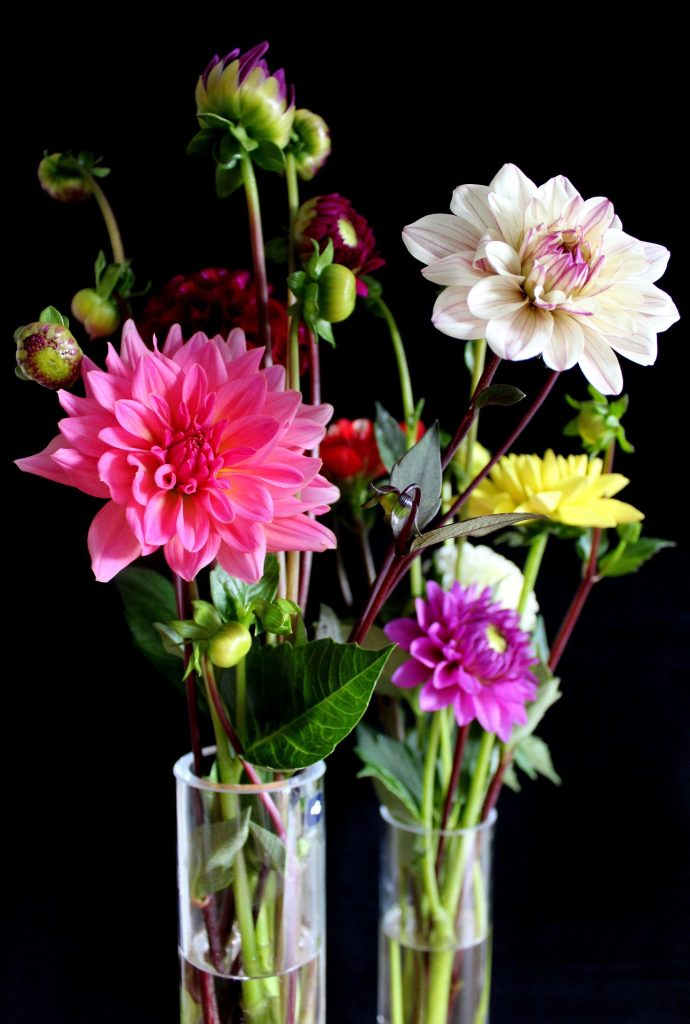
Digging and storing tubers
After the first frost, dig the tubers from the soil to preserve them for the next growing season. Do not make the tubers overstay in the frost as it eventually kills them. Allow the tubers to dry for one day and then store them in a cool, dry area.
Growing Dahlias from seeds
Put potting soil mix in a tray and sprinkle seeds on top, then water. Dahlia seeds are very small in size. Sprouting will occur within a period of seven to ten days.
After the seedlings have developed to about 3 inches, transplant them into pots and water them. The container should contain potting mixture of 1/3 sand and 2/3 potting soil. Allow seedlings to grow for 4 to 6 weeks and then transplant them into the garden or into big containers.
Pests and diseases
Slugs and snails: These love to feed on young, emerging shoots, leading to stunted growth.
Control: Use slug bait to capture them.
Aphids: These suck on plant juices causing distortion of foliage.
Control: Use physical means to remove them.
Bacterial wilt: Causes stem rot at the base of the plant, causing stem wilting.
Control: Infected plants should be cut and destroyed, use disease free tubers.
Powdery mildew: Produces white powdery substance that appears on the upper side and underside of leaves. The disease gets worse in the late season. Leaves get distorted and drop.
Control: Space plants properly to allow aeration, use anti-fungal spray on affected plants.
Dahlia mosaic virus: Spread by aphids, the disease causes leaf mottling. Leaves are dwarfed and start to develop yellow spots.
Control: Control aphids. Destroy infected plants.

